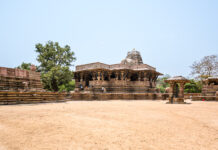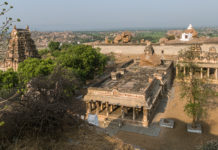Our Planet’s Landmarks Series #29
A variation of this article was published in Times Travel in September 2010.
Simbel Wonder – Abu Simbel Egypt

Lisbon. 7th July 2007. The worldwide voting for the nomination of new 7 wonders was on. Worthy contending monuments (including the Taj Mahal) waited to know their fate. The Pyramids of Giza were turning all the other contenders green with envy.
Pyramids had received an honorary nomination, even before the voting concluded!
Well, that was hardly surprising. For most people, Egypt stands for pyramids. Despite this, I make a blasphemous statement. One, that may invite severe criticism from Egypt lovers, and from those who claim to know their travel.
“When in Egypt, if you have a choice to see only one monument, that monument should be the temple of Abu Simbel. And not the Pyramids of Giza”.
Now, now — before you overreact, read on to know why!
Hold Your Brickbats
Ramesses II was ancient Egypt’s longest reigning Pharaoh. His reign lasted 67 years! He commissioned Abu Simbel to impress his southern neighbours. And to establish Egyptian religion in the region.
It is, thus, located approx. 290 km southwest of Aswan, near the Sudan border.

Carved out of a single cliff, it has 2 separate temples. One, that of Ramesses II. Dedicated to Amon-Ra, Re-Harakhte, and Ptah. It also deifies Rameses II. And two, that of his wife, Nefertari, dedicated to Hathor.
Each of the 4 statues guarding the temple of Rameses II is 20 metres tall. And the 6 guarding the temple of Nefertari, 10 metres tall.

Ancient Wonder Abu Simbel
This mega structure was ahead of times in its architecture and astronomy. Its sanctum sanctorum gets a shaft of light from the rising sun only twice a year. On the spring and fall equinoxes. Between 19th & 21st March, and between 21st & 24th September, depending on the year.
This shaft of light illuminates only 3 out of the 4 statues there. The 4th one remains in darkness, as that’s the statue of the god of darkness (Ptah).

Modern-day Wonder Abu Simbel
Impressive, right? Well, this tells us why it is an ancient wonder! It is a modern day wonder too. And let’s see why!
Nasser (the erstwhile PM of Egypt), with Russia’s help, had commissioned the Aswan High Dam. The dam threatened inundation of around 60 ancient Nubian temples. Egypt requested UNESCO’s help. And UNESCO appealed to the member countries at large.
Around 50 countries came forward to help. And a full-fledged temple relocation industry got established. Some of these temples did go underwater. But most got saved. Through relocation to safer locales. Including a couple in faraway places like a US museum, and Amsterdam!

In the 1960s, a team dismantled Abu Simbel into large stone blocks. Those blocks were then transported from their original location to a sandstone cliff. The cliff was 65 metres higher than the original location. And it was about 200 metres further back from the river.
Relocation and its Challenge
The backdrop of Abu Simbel was a cliff.
Problem:
The relocated temple would be on top of the cliff, which had no backdrop.
Solution:
Construct an artificial mountain behind the relocated temple’s facade.
This entire feat took over 4 years to pull off (from 1964 to 1968). In construction industry terms, it was almost a photo-finish. Before the water level of River Nile rose in the area, the temple had been re-assembled at the safe height of a cliff.
There’s an exciting thriller that UNESCO has put together on DVD, ‘Abu Simbel, Philae…Saved’. It is a recommended must-watch for all heritage lovers.
After its relocation, the temple stands tall and proud atop a cliff. But for one slight miscalculation. The morning sun stopped penetrating its sanctum sanctorum on the equinoxes. Instead, it began to do so a day earlier.

UNESCO inscribed Abu Simbel on its World Heritage Sites list in 1979. They acknowledged it as a masterpiece of human creative genius.
Convinced yet, about why Abu Simbel is the 9th wonder of the world and our planet’s landmark?
Getting There
Let’s see how you can actually visit this exotic place. In tourism itinerary, it is closest to Aswan.
The choice is to take a bus from Aswan that forms a part of the early morning convoy of buses. These reach you to Abu Simbel between 5.30 and 8.00am. These buses give you an average two and a half hours at this gorgeous spot. And then travel back to Aswan to bring you back by evening.
Or, if flying into Aswan from Cairo in the morning to sail on an afternoon Nile cruise, book yourself on a flight. There are 2-3 morning flights that return the same afternoon. These also give you about two and a half hours in Abu Simbel. And they bring you back in time for the departure of your Nile cruise.
The total cost for such a trip is about US$ 150. It covers both way airport transfers, the ticket to the temples and an English speaking guide.

But, the most exotic choice is the 3,4 or 7-night cruise on Lake Nasser. It not only takes you around Abu Simbel but also to other relocated temples around the area. And each of those temples tells you many stories about the greatness of a civilisation that was.



















